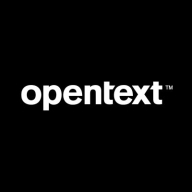

OpenText Core Application Security and Semgrep are competitors in the application security sector. Semgrep is often favored due to its comprehensive feature set, although OpenText Core offers competitive pricing and support options.
Features: OpenText Core Application Security specializes in comprehensive vulnerability scanning, detailed reporting, and enterprise-grade threat intelligence. Semgrep is known for its ability to integrate smoothly with CI/CD pipelines, its customizable rules for code analysis, and its high flexibility to adapt to various environments.
Ease of Deployment and Customer Service: OpenText Core Application Security ensures enterprise-level deployment support and attentive customer service, which facilitates a smooth implementation process. Semgrep provides a quick and straightforward setup process, appealing to technical teams seeking agility, although it does not match OpenText Core's personalized deployment assistance.
Pricing and ROI: OpenText Core Application Security involves a higher setup cost, which can be justified by its feature set and extensive support, offering potentially substantial ROI for larger organizations. Semgrep provides cost-effective options with a focus on code quality, promising good returns for smaller teams due to its lower initial costs and efficient results.
| Product | Market Share (%) |
|---|---|
| OpenText Core Application Security | 3.2% |
| Semgrep | 2.9% |
| Other | 93.9% |


| Company Size | Count |
|---|---|
| Small Business | 17 |
| Midsize Enterprise | 8 |
| Large Enterprise | 44 |
OpenText Core Application Security offers robust features like static and dynamic scanning, real-time vulnerability tracking, and seamless integration with development platforms, designed to enhance code security and reduce operational costs.
OpenText Core Application Security is a cloud-based, on-demand service providing accurate and deep scanning capabilities with detailed reporting. Its integrations with development platforms ensure an enhanced security layer in the development lifecycle, benefiting users by lowering operational costs and facilitating efficient remediation. The platform addresses needs for intuitive interfaces, API support, and comprehensive vulnerability assessments, helping improve code security and accelerate time-to-market. Despite its strengths, challenges exist around false positives, report clarity, and language support, alongside confusing pricing and package options. Enhancements are sought in areas like CI/CD pipeline configuration, report visualization, scan times, and integration with third-party tools such as GitLab, container scanning, and software composition analysis.
What features define OpenText Core Application Security?Industries like mobile applications, e-commerce, and banking leverage OpenText Core Application Security for its ability to identify vulnerabilities such as SQL injections. Integrating seamlessly with DevSecOps and security auditing processes, this tool supports developers in writing safer code, ensuring secure application deployment and enhancing software assurance.
Semgrep is an advanced static analysis tool designed to identify vulnerabilities and enforce coding standards, catering primarily to professionals with a focus on enhancing code security and quality.
Engineered for software development environments, Semgrep delivers efficient security feedback with minimal setup. By offering a rich collection of rule sets, it allows customization and integration into CI/CD pipelines, supporting continuous code examination. Semgrep not only uncovers hidden flaws but also enforces best practices, making it a valuable asset for development teams seeking to build secure and reliable software.
What are the most important features of Semgrep?In industry applications, Semgrep is a popular choice for sectors such as finance and healthcare, where code integrity and security are paramount. Its integration capabilities allow for effective oversight of compliance and secure coding standards without disrupting existing workflows. This adaptability ensures it meets sector-specific requirements, making it a trusted tool in fields where data privacy and protection are critical.
We monitor all Static Application Security Testing (SAST) reviews to prevent fraudulent reviews and keep review quality high. We do not post reviews by company employees or direct competitors. We validate each review for authenticity via cross-reference with LinkedIn, and personal follow-up with the reviewer when necessary.